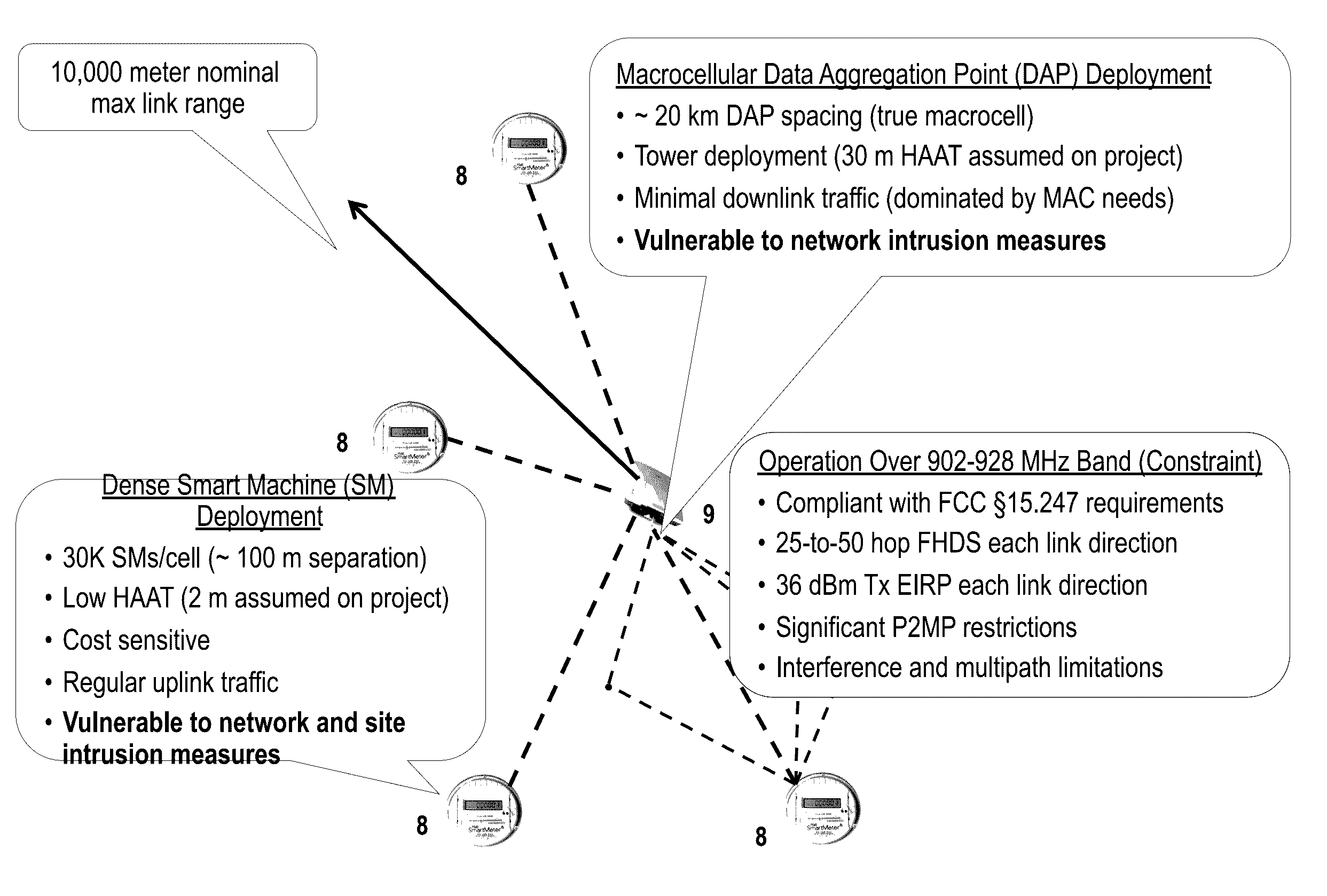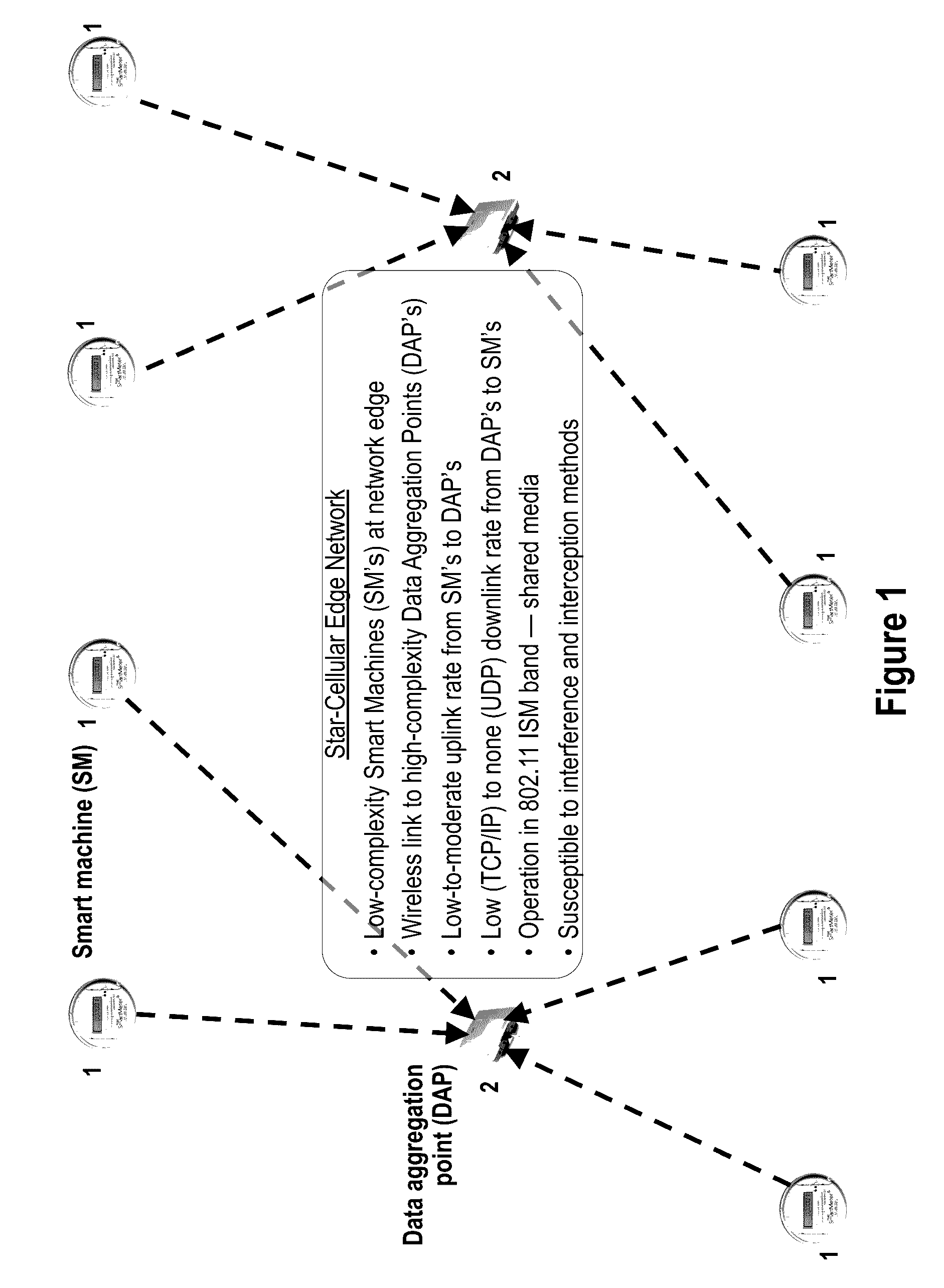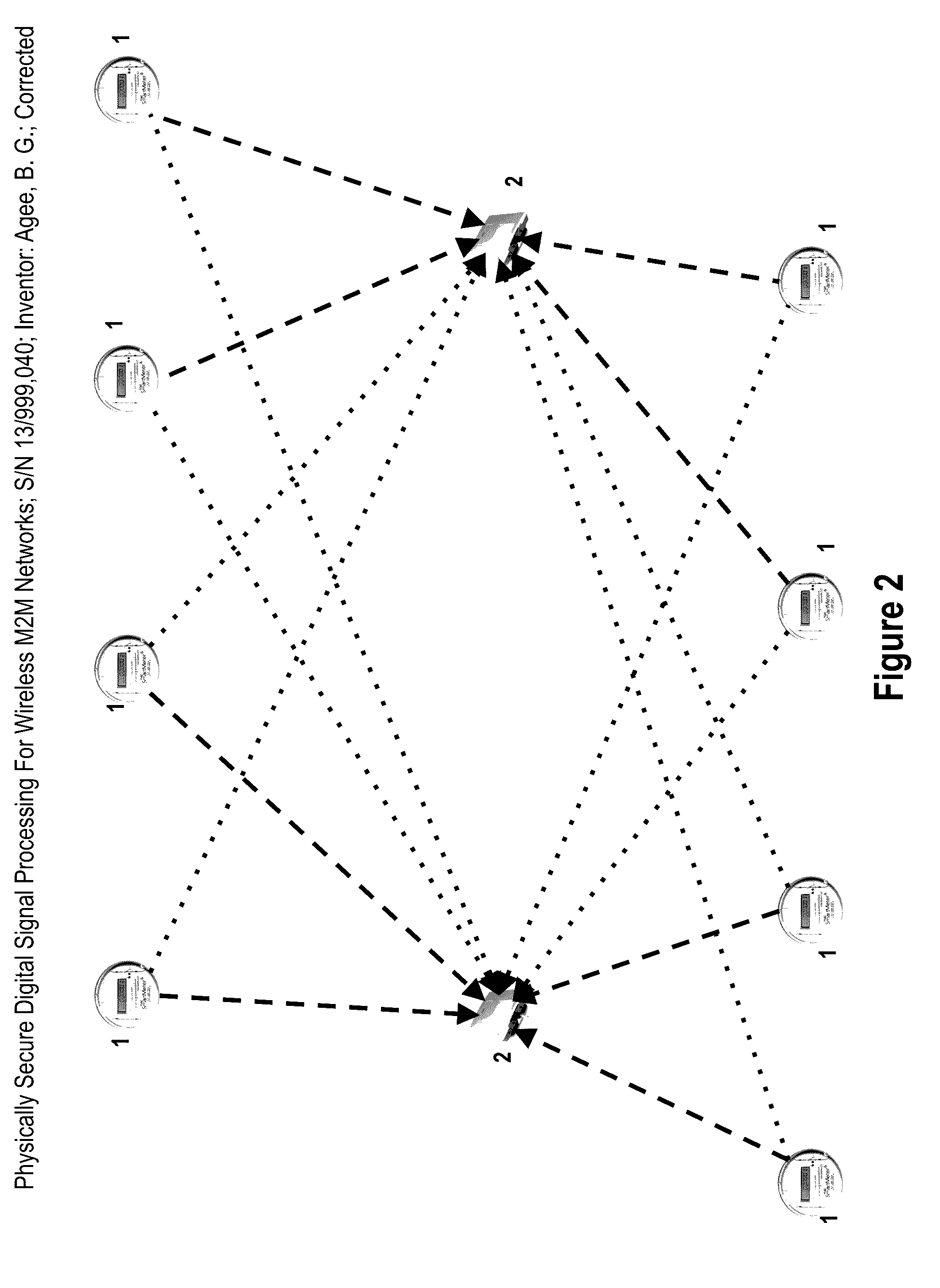Physically secure digital signal processing for blind differentially-spread wireless m2m networks
a digital signal and wireless m2m technology, applied in the field of digital signal processing, can solve the problems of more likely power provisioning, more expensive, and more likely to be interfered with the network, and achieve the effect of reducing data transmission rates, avoiding provisioning overhead, and increasing security
- Summary
- Abstract
- Description
- Claims
- Application Information
AI Technical Summary
Benefits of technology
Problems solved by technology
Method used
Image
Examples
Embodiment Construction
[0148]While this invention is susceptible of embodiment in many different forms, there is shown in the drawings and will herein be described in detail several specific embodiments with the understanding that these specific embodiments of the present disclosure are to be considered as individual exemplifications of the principles of the invention and not intended to limit the invention to the embodiments illustrated.
[0149]The embodiments described herein presume a hardware implementation that uses a single antenna per transceiving element, to which any of a set of spatial excision / separation methods of digital signal processing may be applied, including: Linear demodulators (which provide the benefits, among others, of low complexity, simpler network coordination); blind and / or uncalibrated adaptation algorithms; and Subspace-constrained partial update (SCPU) (in order to minimize adaptation complexity). In a further embodiment, more than one antenna may be used and additional dimens...
PUM
 Login to View More
Login to View More Abstract
Description
Claims
Application Information
 Login to View More
Login to View More - R&D
- Intellectual Property
- Life Sciences
- Materials
- Tech Scout
- Unparalleled Data Quality
- Higher Quality Content
- 60% Fewer Hallucinations
Browse by: Latest US Patents, China's latest patents, Technical Efficacy Thesaurus, Application Domain, Technology Topic, Popular Technical Reports.
© 2025 PatSnap. All rights reserved.Legal|Privacy policy|Modern Slavery Act Transparency Statement|Sitemap|About US| Contact US: help@patsnap.com



